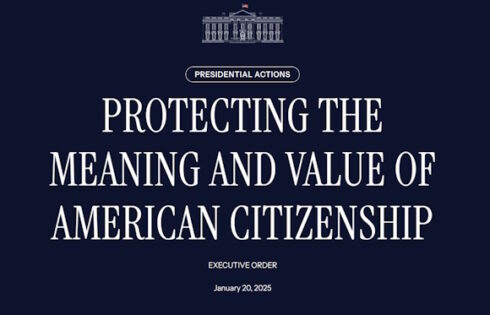The University of Missouri’s “Guide to Religion” includes nearly 10 Wiccan and Pagan observances that professors are asked to consider when scheduling homework or tests. Students are asked to weigh the pagan festivals as they develop campus activities as well, the guide states.
The guide, created as one part of the school’s recently launched “Chancellor’s Diversity Initiatives,” suggests educators try to avoid due dates or exams on holidays listed therein.
“We also hope that the information … will be valuable to those planning classroom activities and other academic and co-curricular events,” the guide states.
In addition to many other religious holidays, the guide lists eight separate Wiccan and pagan celebrations, observances and festivals: the Autumn equinox; the Wiccan New Year, also known as Halloween; the Winter solstice; the Feast of Pan; the Spring equinox; Beltane, the fire festival; the summer solstice; and the Lammas harvest celebration.
The guide uses cheery, innocuous descriptions to explain the celebrations, noting Halloween as simply “a time to celebrate the lives of those who have passed on, welcome those born during the past year into the community, and reflecting on past relationships, events and other significant changes in life.”
The Feast of Pan simply “celebrates the coming of spring and recovery of the Earth Goddess after giving birth to the Sun God,” the guide states. “Activities might include making candles, reading poetry and telling stories.”
The summer solstice celebrates “the Goddess manifesting as Mother Earth and the God as the Sun King.” Suggested activities include “lighting bonfires” and “watching the sun rise.”
At the fire festival, it’s time to jump the balefire or dance the May Pole, the guide suggests.
The Wiccan and pagan festivals are listed right alongside major religious holidays such as Easter, Christmas, Ramadan, and several other Jewish and Buddhist observances.
Their inclusion in the religion guide may be considered an indication by some of the mainstreaming of Wiccan and pagan beliefs in America.
Catherine Edwards Sanders chronicles this longstanding trend in her 2005 book, “Wicca’s Charm: Understanding the Spiritual Hunger Behind the Rise of Modern Witchcraft and Pagan Spirituality.”
In it, she loosely defines Wicca as “monistic and pantheistic beliefs that all living things are of equal value. … Humans have no special place, nor are they made in God’s image. … Wiccans believe that they possess divine power within themselves and that they are gods and goddesses. …Consciousness can and should be altered through rite and ritual.”
Sanders also notes most Wiccans do not believe in Satan, but they do believe evil exists.
“Wiccans, as a rule, are not consciously or deliberately worshiping Satan,” she writes. “Whether they are unconsciously worshipping him is an issue on which Wiccans will differ with Christians.”
It remains to be seen whether the University of Missouri’s homage to Wicca will become a point of contention among students and staff, especially among the school’s large percentage of Christians, Muslims and Jews.
The University of Missouri, according to the office of the Chancellor’s Diversity Initiative, serves nearly 35,000 students from more than 109 different countries. Data on how many students are religious, and which beliefs they follow, are not available, according to campus officials.
While the percentages of Mainline American Christians have declined over the past twenty years, from 86.2 percent in 1990 to 76 percent in 2008, they still, in terms of percentage, dwarf the 1.2 percent of American Wiccans and Pagans, according to the American Religious Identification Survey of 2008. These statistics beg the question: why put both Christianity and Wiccans in equipollency?
They are not—once again, speaking in terms of percentage—holding on an even footing. If being a legally recognized religion is the one of the prerequisites for getting on the guide, why not carve out a couple of days to accommodate for Scientology—after all, it is a steadily growing, tax-exempt, government approved religion.
The office of the Chancellor’s Diversity Initiative’s Marketing Specialist Rebecca Calvin told The College Fix through email that the guide was crafted with the help of collaborators like the Association of Campus Religious Advisors, the Islamic Center of Central Missouri, the Jewish Campus Center, and the Baptist Student Ministry.
Calvin stated the office of the Chancellor’s Diversity Initiative did not “have an accurate number of our campus community’s religious and spiritual preferences” and that “the variety of religions (in the guide) were determined based on the requests received.”
Calvin stated the Wiccan observances were included in the guide based on telephone requests. It’s unclear whether those requests were made by students.
As for the criteria on what religions were included and what were left out of the guide, it appears university official did not make decisions based on how many followers a religion has.
There are many religions that have higher membership totals than the Wiccans and Pagans, according to the United States Census of 2008, so it’s unclear why the university chose to elevate those beliefs on its guide.
Indeed, Wiccan and pagan observances on the guide outnumbered most of the other religions’ holidays listed.
Fix contributor Christopher White is a graduate student at the University of Missouri.
Click here to Like The College Fix on Facebook.
IMAGE: Smiling DaVinci/Flickr
Like The College Fix on Facebook / Follow us on Twitter





Please join the conversation about our stories on Facebook, Twitter, Instagram, Reddit, MeWe, Rumble, Gab, Minds and Gettr.